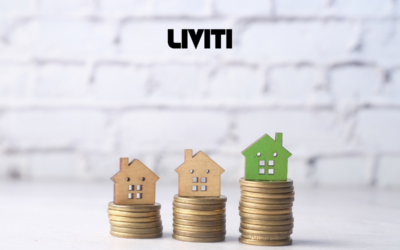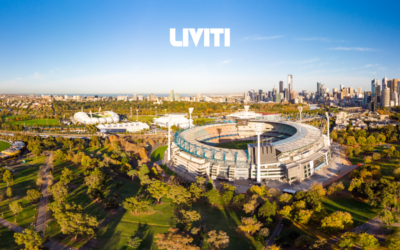Welcome to the first chapter of our Masterclass. This is the first blog post in a series of posts that guides you through the path of achieving financial freedom and generational wealth through property investments.
Chapter 02: Learn Everything You Need On How To Purchase Property In Australia
Chapter 03: Why Investing In Property Is The Way To Create Wealth & Financial Freedom In Australia
Chapter 04: 8 Steps For Investment Property Financing To Purchase Your Dream Property
Chapter 05: 2 Ways To Master Property Investment For Financial Success
Chapter 06: Equity Release Strategies You Need To Know To Achieve Financial Freedom Through Property
Chapter 07: Building A Diverse Property Portfolio For Long-term Success

Investing in real estate is a time-tested investment strategy for creating long-term wealth. For many, the idea of owning an investment property is both exciting and daunting, particularly for those unfamiliar with the property market landscape.
In Australia, where the property market has historically been stable, now may be the right time to start looking into property investment. If you’re keen on purchasing an investment property but unsure of where to begin, this step-by-step guide aims to make your investment journey as smooth as possible.
What Is Property Investing?
Property investment refers to the practice of purchasing real estate properties with the expectation of generating a return on investment. The primary goal of property investment is typically to make a profit through various means, such as rental income, capital gains, or a combination of both.
Investors may acquire residential, commercial, or industrial properties, and their strategies can vary. Here are two common approaches to property investment:
Buy and Hold
In this strategy, investors purchase a property and hold onto it for an extended period, typically with the expectation that its value will appreciate over time. They may generate income from renting out the property to tenants.
Fix and Flip
This investment property strategy involves purchasing, making improvements or property renovations to increase its value, and then selling it quickly for a profit. The profit is realised from the difference between the purchase price and the sale price.
Investment property can be a source of income, a long-term wealth-building strategy, or a combination of both, depending on an investor’s goals and risk tolerance. It requires careful research, financial planning, and consideration of factors such as location, property type, market conditions, and financing.

To start your investment property, here’s an easy step-by-step guide to get you started.
How do you get started in buying your first investment property?
Step 1: Research and Planning
Before diving into getting your first investment property, it’s crucial to do your homework. Start by studying market trends, understanding property values in different regions, and analysing the rental yield prospects. Consider subscribing to property market reports or using reputable resources such as CoreLogic and Realestate.
Step 2: Set Your Budget
Determine your budget based on your financial standing. Factor in all costs, including the investment property price, down payment, mortgage repayments, maintenance, property management fees, and potential vacancy periods. Financial advisors and mortgage brokers can help you figure out what you can afford.
Step 3: Financing
Unless you have a lump sum of money saved up, you’ll need financing for your investment property. Banks and non-bank lenders offer various mortgage options suitable for investment properties. Work closely with a mortgage broker to find the best loan package for your needs.
Investment property mortgage brokers, with their specialised expertise in the real estate investment landscape, stand a notch above standard brokers when it comes to securing the best loan packages for investors. They not only have access to a broader network of lenders to help you find more competitive rates and terms but also bring to the table a deep understanding of investment strategies, offering tailored advice and vital insights into tax and legal compliance.
If you don’t know where to start, contact our team today!
Step 4: Assemble Your Team
Your first investment property shouldn’t be a solo venture. Surround yourself with a skilled team, which may include a real estate agent, legal advisor, property manager, and accountant. These professionals can guide you through the complexities of property investment, from finding the right property to managing your taxes.
Step 5: Identify Potential Properties
Once you have your budget and team in place, it’s time to start hunting for properties. Online portals, real estate agencies, and auctions are good places to start. Make sure to inspect each property, understand the local market conditions, and consider the property’s potential for capital growth and rental income.
Our team at Liviti specialises in assisting property seekers like you to build a diverse portfolio that offers strong returns and low maintenance, providing a reliable pathway to long-term financial success. With our help, you can gain access to exclusive and off-market investment opportunities across Australia in regions with some of the highest economic and population growth.
Step 6: Due Diligence
Conduct a thorough due diligence process before making an offer. This includes obtaining an investment property valuation, checking zoning laws, and having building and pest inspections carried out. It’s also essential to review the contract and seek legal advice to understand your obligations and rights.
Step 7: Make an Offer and Close the Deal
Once due diligence is complete and you’re confident in your choice, it’s time to make an offer. If accepted, you’ll need to pay a deposit and finalise your mortgage application. Exchange contracts, and upon settlement, the property is officially yours.
Step 8: Investment Property Management
Decide if you’ll manage the property yourself or hire a property manager. Self-management can be cost-effective but time-consuming. A property manager can handle tenant acquisition, rent collection, and maintenance but will charge a fee for their services.
Step 9: Tax Planning and Record-Keeping
An investment property comes with tax implications, such as capital gains tax and potential tax deductions related to property expenses. Consult with an accountant to optimise your tax situation.
Step 10: Review and Scale
Finally, as with any investment, it’s vital to regularly review your investment property’s performance. Track rental yields, property value, and expenses. If the property is performing well, you might even consider leveraging it to buy additional properties.

Learn more about the pros & cons of property investments
What to Consider About Rental Yield
Rental yield is the annual rental income you receive from a property, expressed as a percentage of the property’s value. It’s a way to gauge how well your property is performing as an investment.
There are a few things you will need to consider when it comes to choosing a good investment property.
Location Matters: The first thing to consider is the property’s location. Different areas in Australia have varying rental yields. In general, properties in major cities tend to have lower yields, while regional areas may offer higher yields.
Property Type: The type of property you invest in also affects yield. Apartments and units often have higher yields compared to houses. Consider what suits your investment goals.
Market Conditions: Keep an eye on the property market conditions. Yields can fluctuate based on supply and demand, so it’s important to stay updated on market trends.
While there’s no universal rule of thumb, a good rental yield in Australia typically falls between 4% to 6%. However, this can vary depending on your specific goals and the factors mentioned earlier. A yield higher than 6% might be considered excellent, especially in regional areas with strong rental demand.
It’s essential to consider location, property type, and market conditions to make an informed investment decision. Always do your research and seek advice from experts if needed.
Is There An Age Requirement To Make Property Investments In Australia?
In Australia, individuals who are 18 years old or older can legally invest in property. However, acquiring their first investment property at a relatively young age might involve important considerations.
Firstly, assessing financial capacity is vital as property investment requires a substantial financial commitment, covering not only the purchase price but also costs like stamp duty, legal fees, and ongoing expenses such as mortgage payments and maintenance.
Demonstrating a stable income and maintaining good credit can be crucial for securing financing. Legal advice may be needed to navigate potential complexities, especially for individuals under 18, and in some cases, parental consent or involvement might be necessary for legal and financial matters until the investor reaches the legal age of majority.
Overall, age is not a barrier to property investment, but young investors should conduct thorough research, seek professional advice, and evaluate their financial situation and objectives before making any significant decision.
FAQs for Investment Properties in Australia
Is An Investment Property Worth It?
Whether having an investment property in Australia is worth it or not depends on factors like market conditions, rental income, property type, and your financial goals. It can be a profitable venture with potential for rental income and capital appreciation, but it also comes with costs, risks, and the need for research. Diversify your investment portfolio and consider your long-term strategy.
Where Are The Best Places For First Investments?
Remember, the journey of a good investment property is a marathon, not a sprint. You can search thousands of listings over the internet or ask agents you know, but nothing cuts time and effort like partnering with the right real estate company. Skip the numbers game by finding the best property in Australia by calling the pros who have already done that for you. If you carefully plan and collaborate with real estate pros, your investment property can be a lucrative addition to your financial portfolio.
Get started on your first investment property journey and create financial freedom through property today by getting in touch with the experts!




